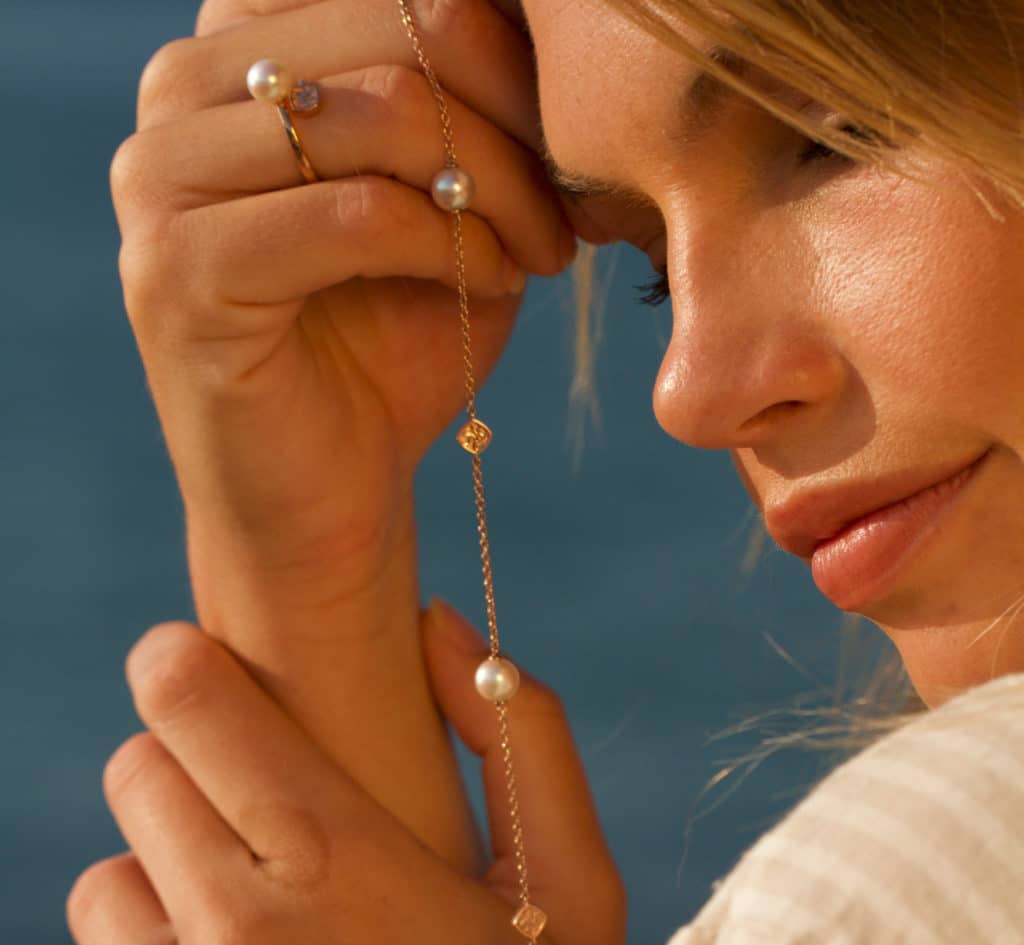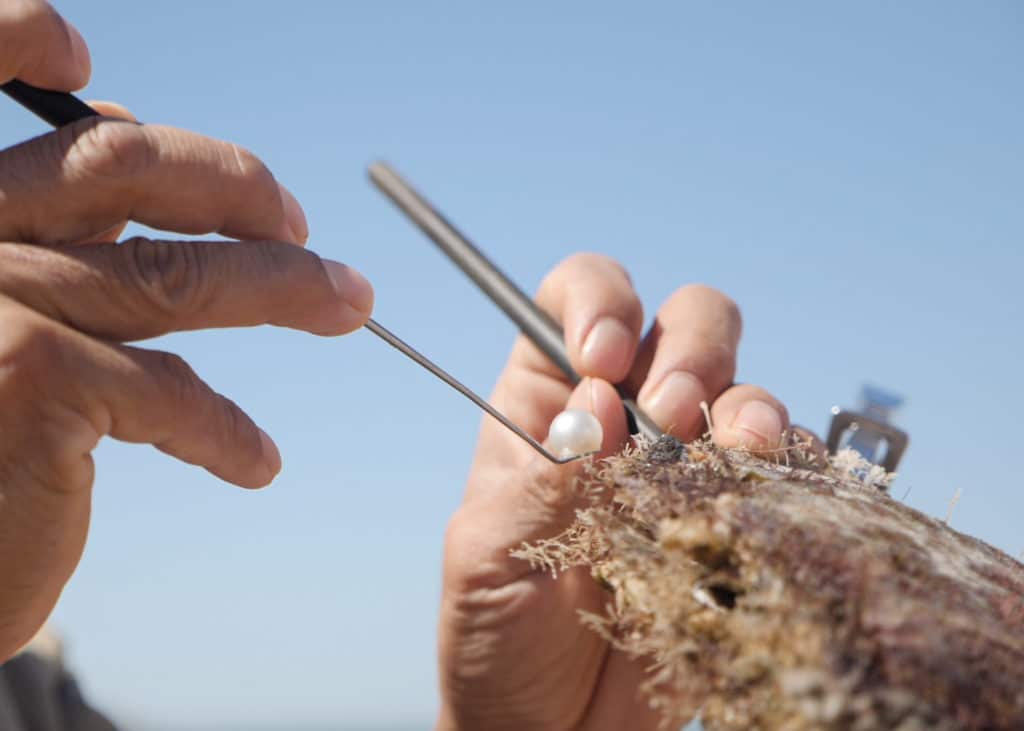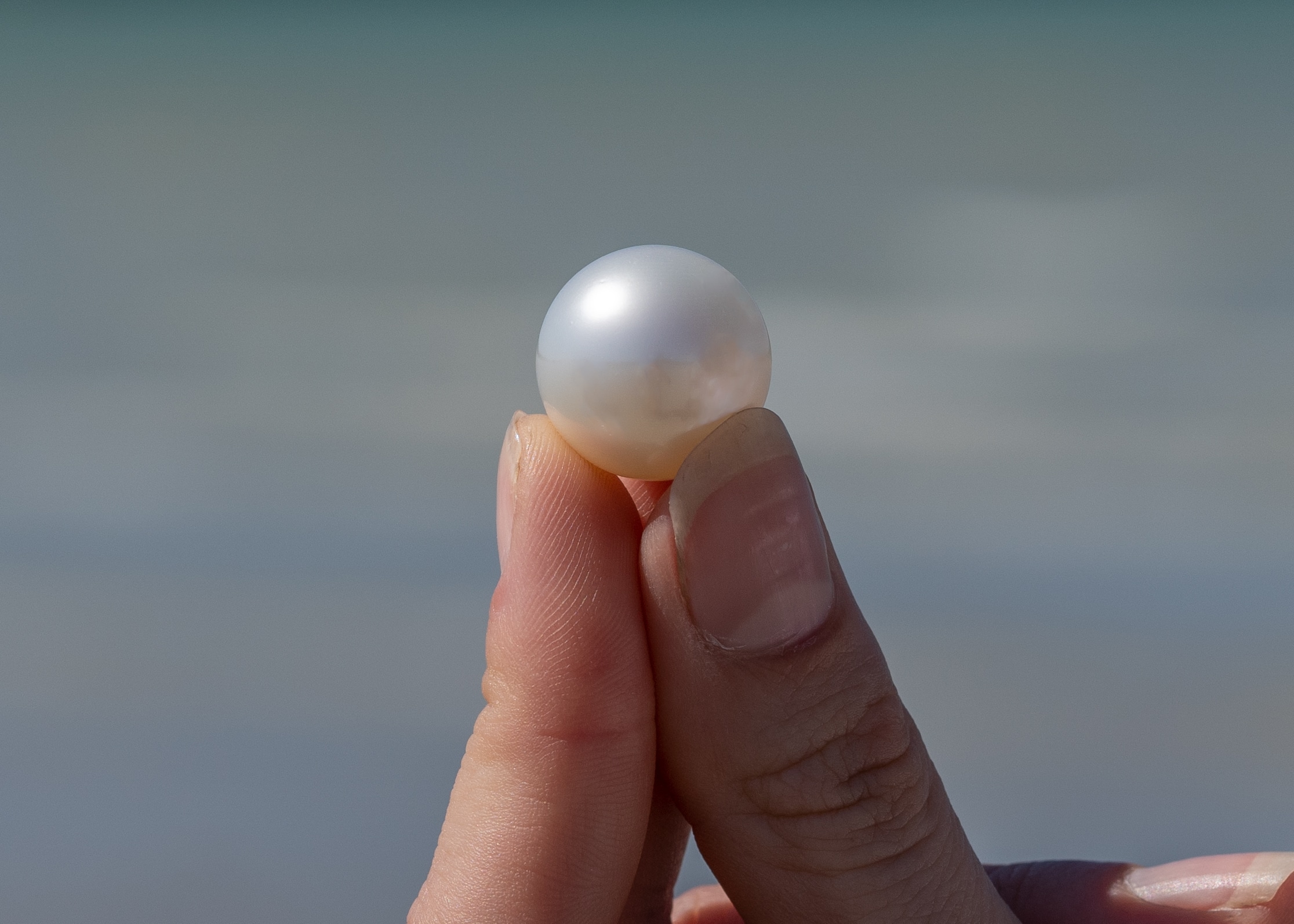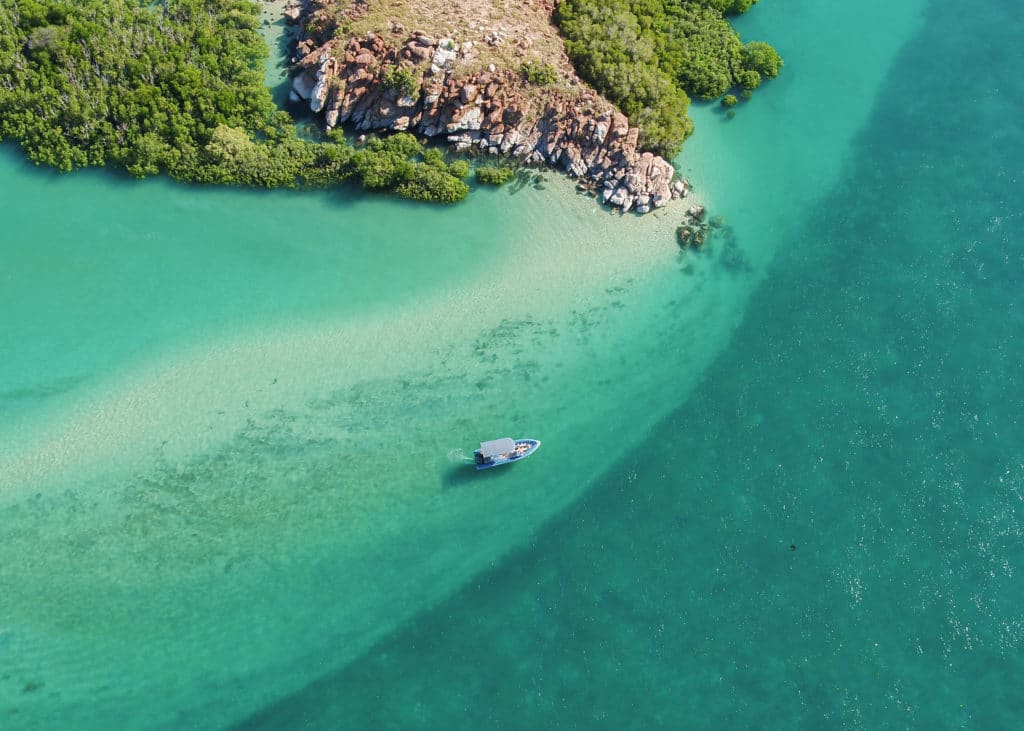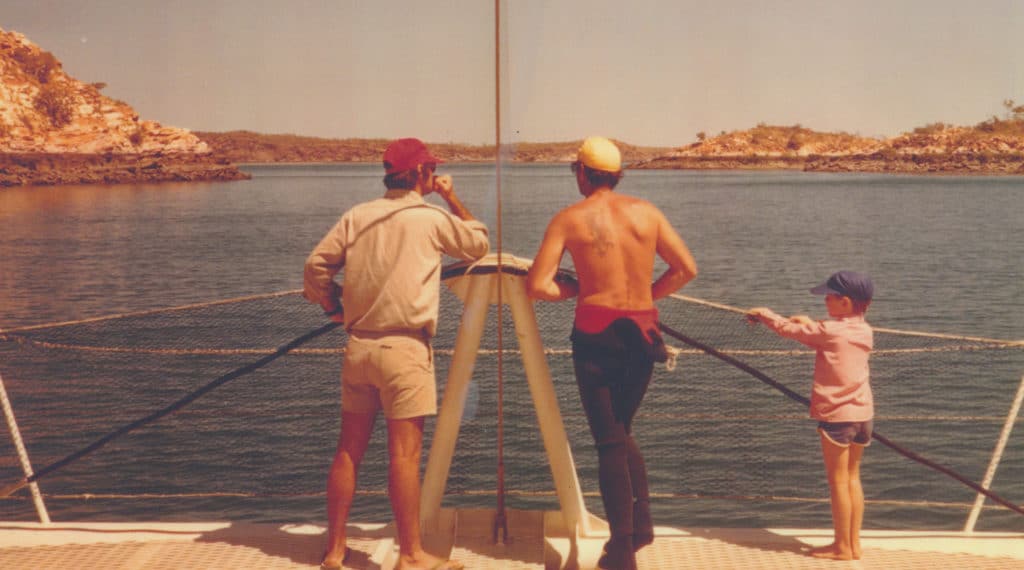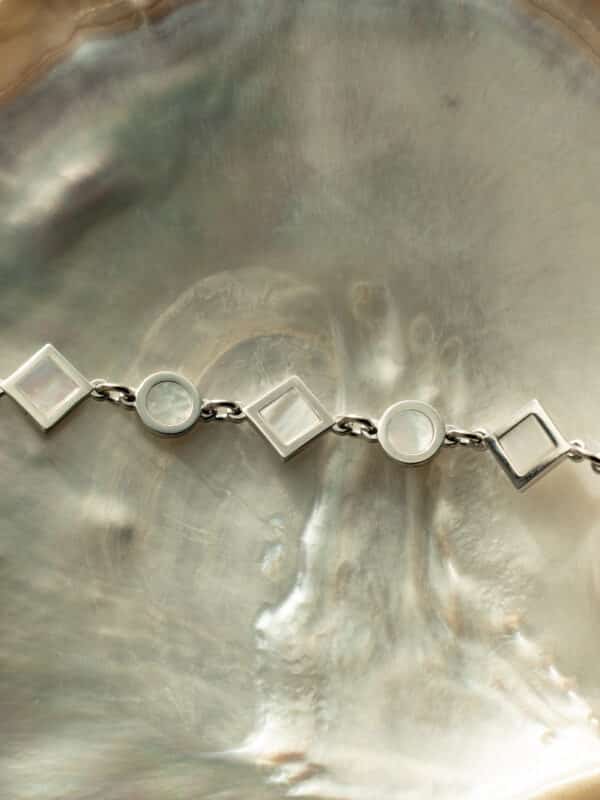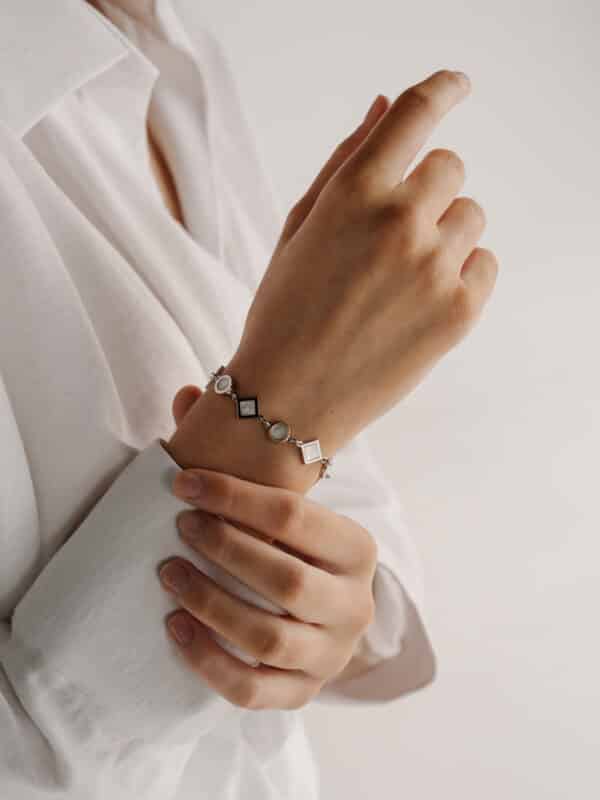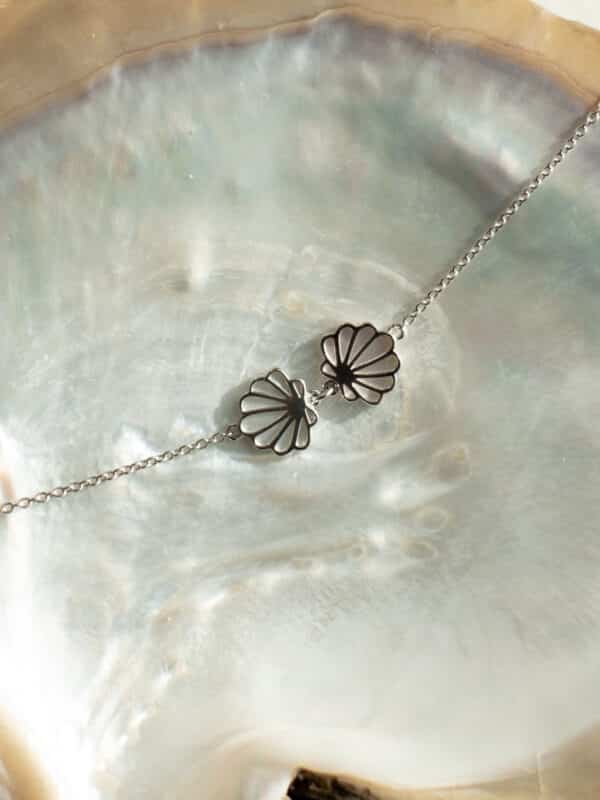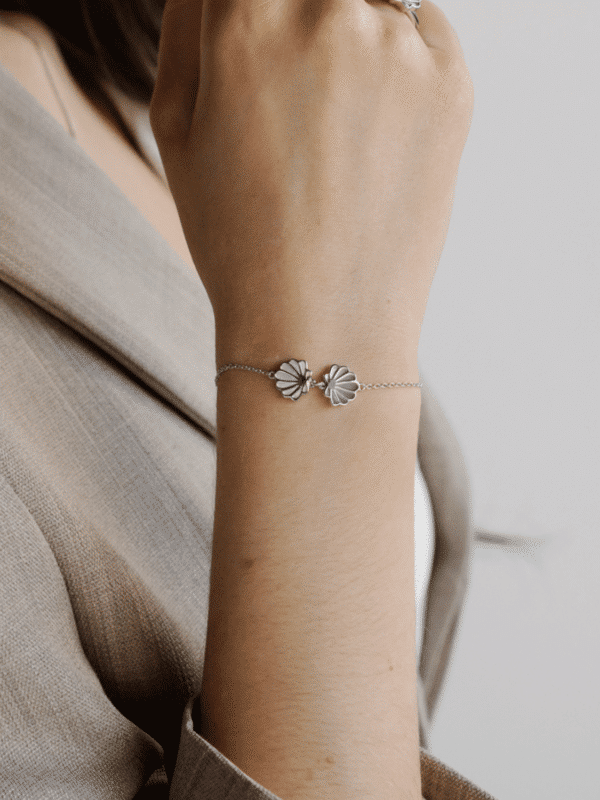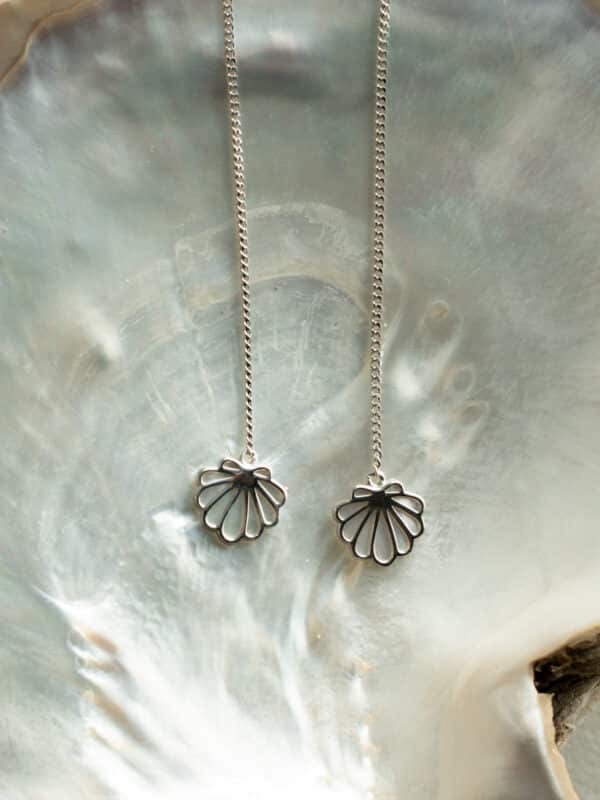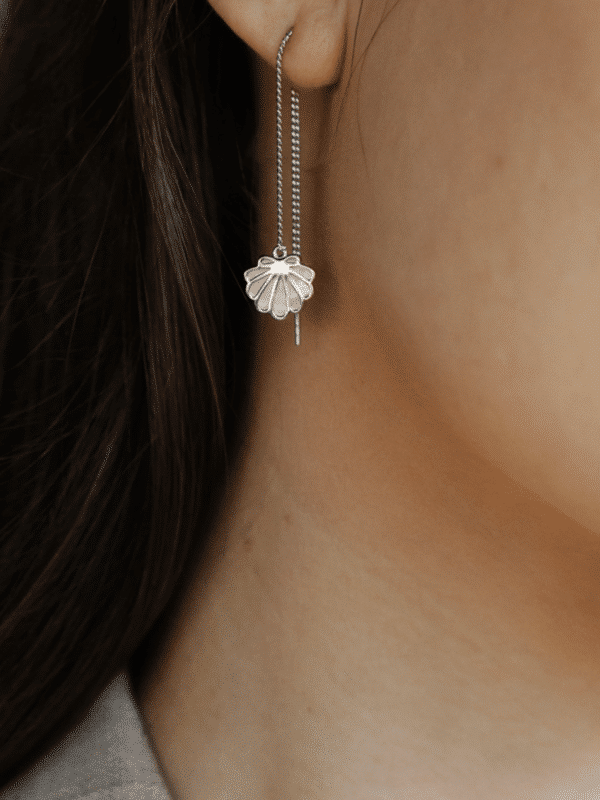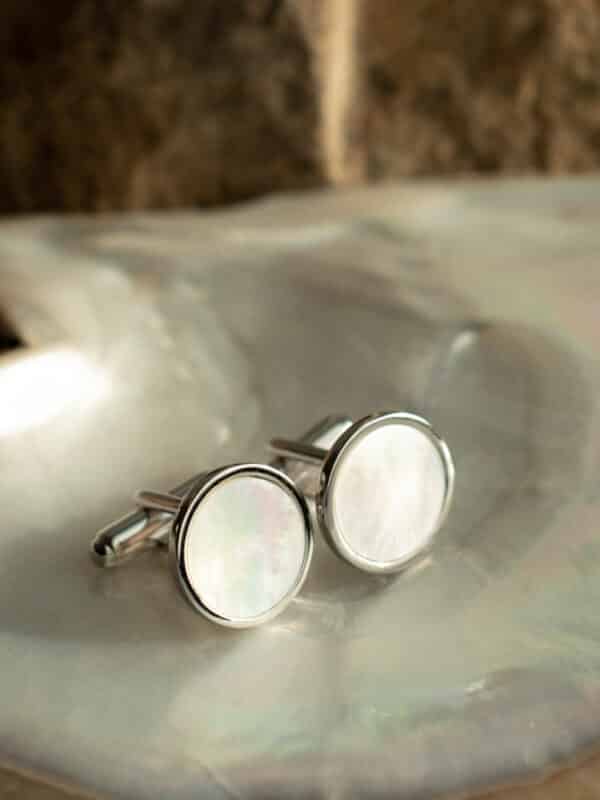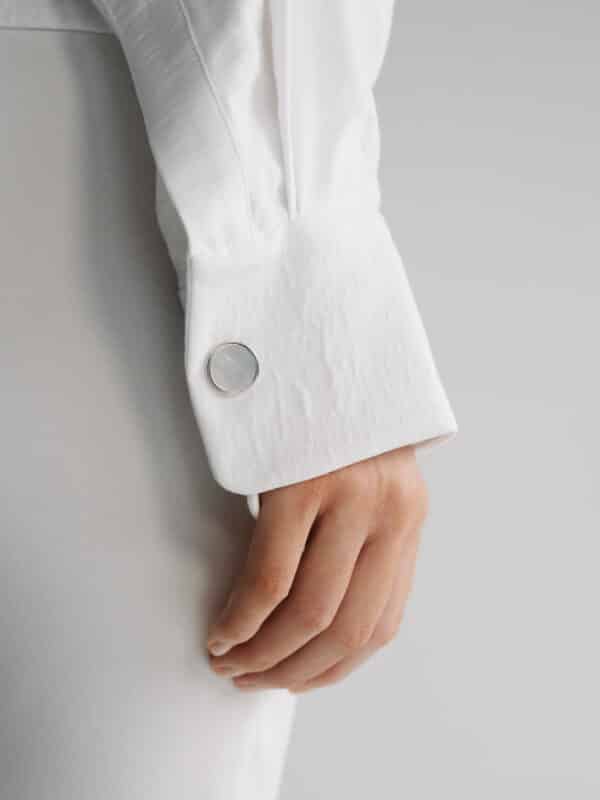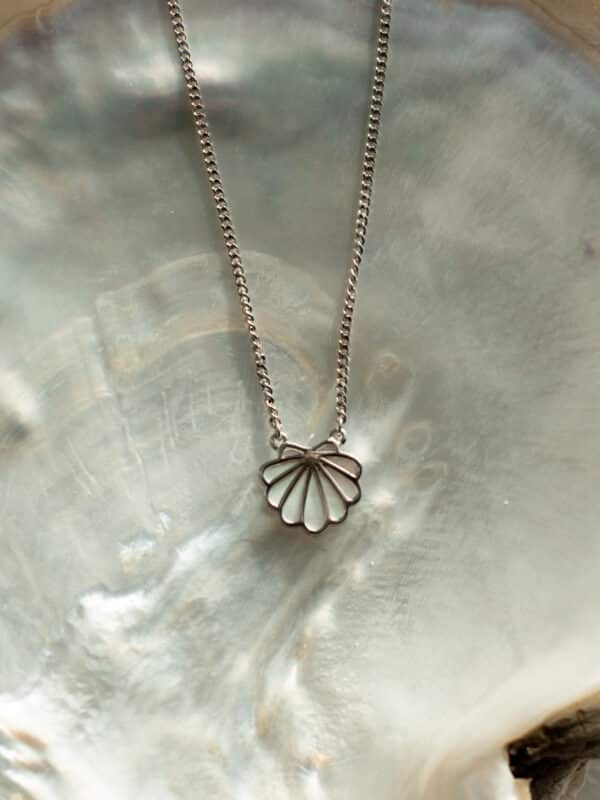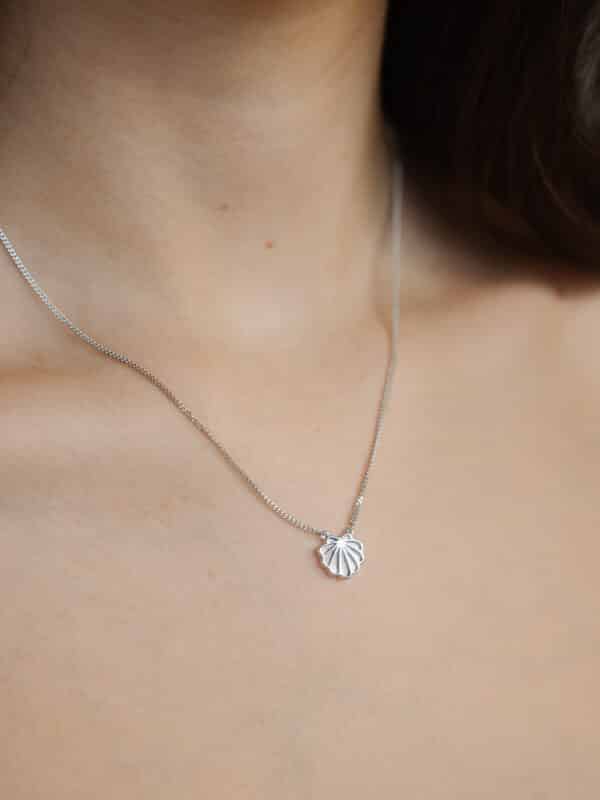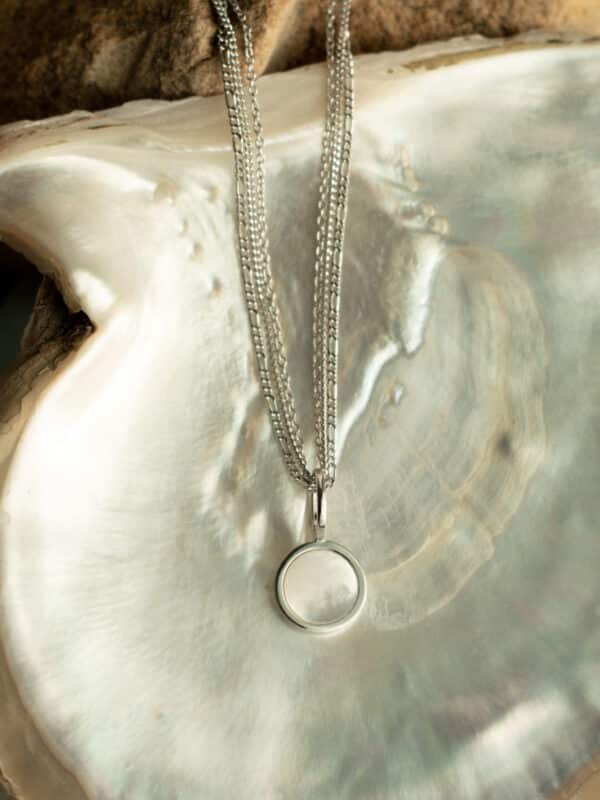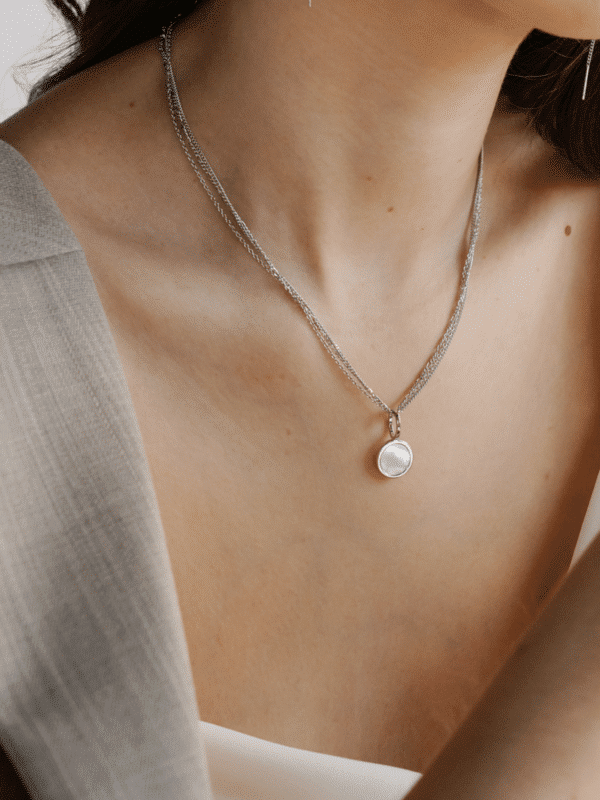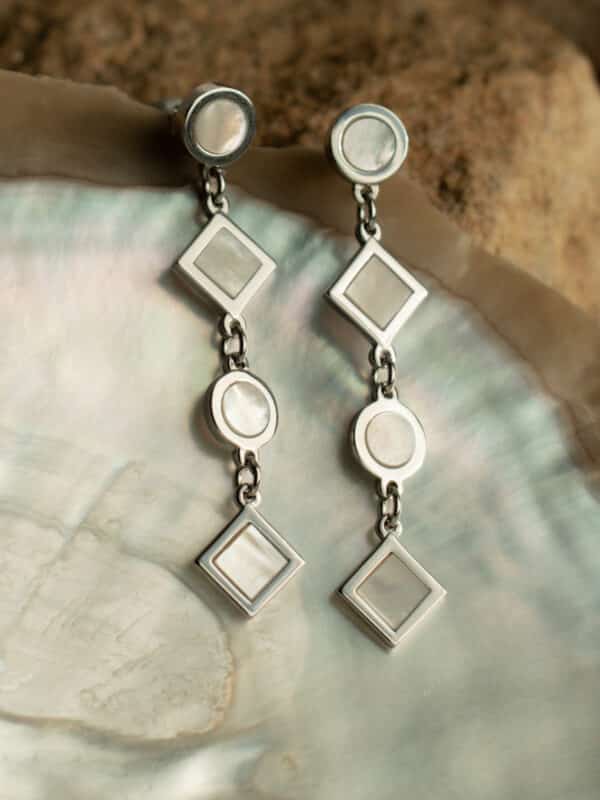The close relationship between mother of pearl and pearls can cause some confusion between the two. In this article we’ll look at what mother of pearl is, and cover key points including where it comes from, what it’s used for, and how it differs from actual pearls.
What is Mother of Pearl?
Mother of pearl is the name used for the iridescent substance that forms the inner layer of the shell of molluscs. It is found mostly in three types of molluscs which include pearl oyster shell.
Mother of pearl is formed as nacre layers the pearl shell. Read on to learn more about this incredible process.
For hundreds of years mother of pearl has been harvested and set into pieces of jewellery. Mother of pearl remains popular today not only because of its aesthetic appeal, but also its durability and versatility. Pearls of Australia offers a range of Mother of Pearl Jewellery – be sure to check out our beautiful collection online or in-store.
What is Nacre?
Scientifically speaking, mother of pearl is the nacre produced by the shell. Nacre is a substance composed of calcium carbonate crystals, silk proteins and other organic materials which are layered like brick work over the inner lining of the shells. This layering results in the wave striations that can be seen on shells.
The iridescence of the nacre comes from the way that each successive layer of the nacre secretion thickens based on the amount of visible light available. The layers of varying thickness causes light to reflect off the nacre from different depths, causing any visible layers to appear as different shimmering colours.
How is it formed?
Mother of pearl is an organic gemstone, just like pearls, but the journey of its formation is a different path than that of pearls.
As mentioned, mother of pearl is the nacre that all shells secrete to form the inner shell layer of pearl shell.
Over the summation of a few years, these layers of nacre take the shape of the inner surface of the shell.
The term mother comes from the belief that the mother nacre protects and bears the pearl in the same way a mother does to her child.
How is Mother of Pearl different from a Pearl?
Although both mother of pearl and pearls originate from the same location – the shell of a pearl oyster – they are formed in different ways.
In terms of shape and size, mother of pearl is larger than a pearl. Pearls are fixed in shape, often smaller and more spherical. Mother of pearl varies in size due to the varying sizes of shells and it has a larger, flatter surface area.
The mother of pearl is the inner layer of the shell of which pearls can be “born”. All shells are composed of mother of pearl, but not all naturally occurring shells produce a pearl. Therefore, they are fundamentally different from one another.
Furthermore the process in which they occur are different. The layering of nacre to create Mother of Pearl will occur regardless whereas pearls will only be formed as a defence mechanism to an irritant.
To learn more about how pearls are created, read here.
How has Mother of Pearl been used?
Mother of Pearl in Egyptian Civilization
Mother of pearl has been used as an ornament throughout Egyptian civilization.
Mother of Pearl and Indigenous Australia
For over 40,000 years, The Bardi Jawi people of the Dampier Peninsula have harvested pearl shell. Not only was the shell an important and nutritious food source, but it was also incredibly culturally significant. These ancient artisans would carve the shell into a teardrop shape which is known as Guwan. They would then carve unique lines into the shell with kangaroo jawbone before staining it with red ochre. In this form it is known as Riji. The men would wear their Riji around the waist, on a belt of human hair, donated by aunties and sisters, during high ceremonies. Associated with power and great honour, these ancient artworks were traded over thousands of kilometres throughout central Australia.
Modern Applications of Mother of Pearl
Mother of pearl reached its height in the 19th century, with mother of pearl buttons as a major global commodity. Demand for mother of pearl buttons was so great that the button industry was using nearly 140,000kg of pearl shell annually.
At this time, Broome in Western Australia was supplying much of the world’s mother of pearl up until World War II (WWII). The cessation of high-volume production was due to the introduction of plastic after WWII, which wiped out the production and export of pearl buttons.
Historically mother of pearl has been harvested and set into pieces of jewellery for hundreds of years, and that decorative usage continues to prosper. Mother of pearl remains popular today not only because of its aesthetic appeal, but also, it’s durability and versatility.
What was Broome’s role in the Mother of Pearl Industry?
Broome was part of the first modern era of pearling – where in the 1870’s mother of pearl fishing begins. In 1910, the Australian pearl shell industry peaked, and Broome became the epicentre for supplying over 80% of all the worlds mother of pearl. Unfortunately, this collapsed in the 1940’s where plastics replaced the use of mother of pearl. However, the fishing industry made cultured pearling legal in Australia after being illegal for almost 20 years.
What colours can Mother of Pearl come in?
Mother of Pearl is famous for the iridescent, rainbow of light that is highly reflective. However, there are multiple colours that may appear in mother of pearl:
Mat: the least lustrous, with a mild silvery or grey tone.
Stone: mildly reflective, and nearly white tone.
Chip: multi-coloured.
White: highly iridescent and luminous, and most widely used for jewellery.
Iridescent: very glossy and a mix of pink and green tones.
How do you clean and care for Mother of Pearl jewellery?
Pearls are delicate gems and require special attention and care to keep them looking their best.
To care for your pearl and mother of pearl jewellery, avoid exposure to harsh chemicals like cosmetics, sunscreen, sanitiser, perfumes, detergents, hairsprays, and cleaning products.
To clean your pearl and mother of pearl jewellery wipe them gently with a soft, damp cloth after each use to remove any dirt or sweat.
Store your pearl or mother of pearl jewellery separately from other jewellery to prevent scratching and keep it away from direct sunlight or heat sources.
To keep your jewellery in excellent condition we offer our customers with a cleaning service. If you would like for your jewellery to be cleaned, please contact our one of our friendly Pearls of Australia team members.
Shop our Mother of Pearl jewellery today!
Renowned worldwide for its iridescence and imperial beauty for centuries, the shell of the Pinctada maxima oyster continues to produce some of the most beautiful and sought-after Mother of Pearl.
As pearl farmers, sustainability lies at the core of our everyday life. Utilising every part of the pearl shell is one step in this direction, and our collection of Australian Mother of Pearl jewellery is a true reflection of our commitment to our planet.
